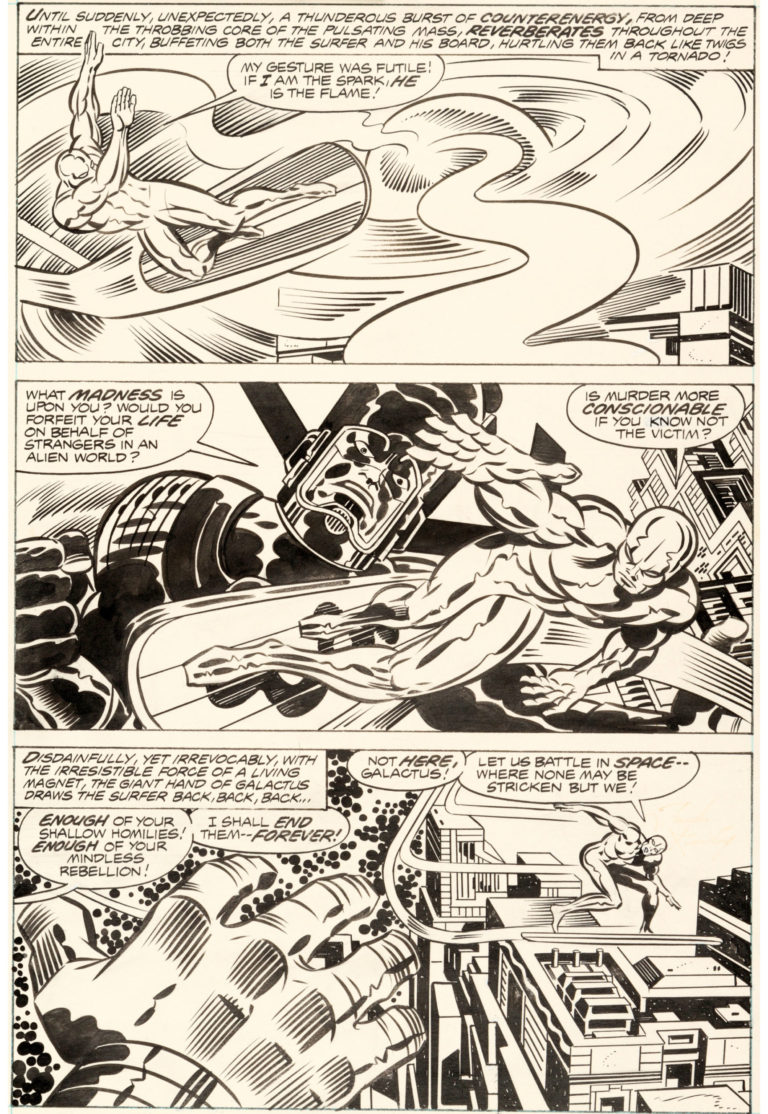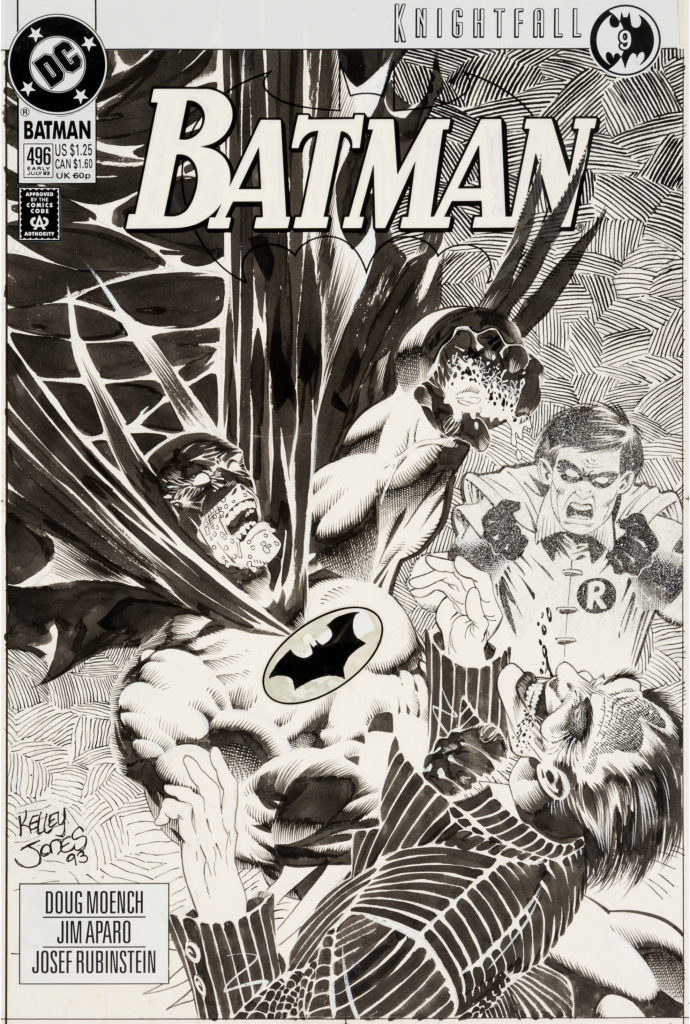
Financial Considerations in comic art collecting
Now that we have talked about what makes pieces desirable, it’s time to talk about money. If you decide to become a collector, instead of just a fan, you will have to spend money on art. This is…usually not a small sum, especially as you purchase more and more pieces, the total cost of an art collection can become very high very quickly.
Many people perceive the introduction of financial consideration into a hobby to lessen it, but it is simply the fact of a collector’s life. While love of the art form drives us to collect, few could stomach a 50% plus loss of FMV on items on a regular basis. It is extremely easy for a collector to spend large amounts of money very quickly. Most need some assurance they aren’t just throwing that money away.
There is nothing wrong with simply being a fan of art, you can buy signed prints from your favorite artists and appreciate comic art in a variety of ways. You can buy artist editions to see art in its full size glory. You can go to gallery showings or conventions. You can even simply browse the internet and look at thousands of amazing pieces of art. I assume however you are here because you want the real stuff, so we will look at the some of the financial considerations to take note of in the hobby. Using your money wisely will lead you to a better collection over the long run and reduce headaches that can occur when you feel you have made financial mistakes in your purchasing.
Long Term Goals
First off you need to decide when buying your long term plans for your collection. A big picture rough draft. Then you can budget accordingly. Figure out the things you would like to add to you collection and make some rough estimates of what they will cost you. Rank the items and figure out which ones you value the most. What are you comfortable spending on a single item, or in a year, or on your total collection after multiple years? Even a basic plan will help you greatly.
Value
Price is what you pay, value is what you get. How much you enjoy a piece matters far more than what it cost to attain it. There can be a mantra in the hobby where only absurdly expensive pieces are great and everything else is meh. Expensive pieces may earn you bragging rights, but I would rather have a collection of pieces I love rather than a collection of pieces that are expensive(not to say that we don’t love and desire expensive pieces, many of them are amazing!) In general prices of published covers are the most expensive , splash pages are second and panel pages are third. Collect what you love. If it is covers so be it. Just realize that your money can go a lot further in panel pages. Commissions and unpublished art can also be a great value when you want a particular example but published ones are out of you price range
Patience
Patience is of particular importance in this hobby financially and in other ways. Funds are limited for the vast majority of collectors, because of this being patient and not just throwing your money at the first thing that sparks your interest will have a huge positive long term effect on your collection. There will always be art you like, wait for art you love. You may go through long periods of time when nothing on you want list hits the market but stay strong.
One of the worst mistakes collectors often make is blowing their budget on a piece they only like, then soon after a piece they absolutely love comes up for sale but they cannot swing it do to the other purchase. If you are buying a few pieces a month you are probably being a bit too impatient. Make a list of the stuff you “must have” and wait for it.
Liquidity
Those funds that you are patiently waiting to spend, make sure they are liquid and easy to get to. Often times when great pieces show up for sale, they can sell very quickly. If you don’t have the liquidity to purchase immediately, you could lose out on them. Keep a specified fund with money ready to deploy. It’s not just the early bird that gets the worm in the hobby, it is the one with plenty of liquidity.
Time payments
Often times sellers are willing to take payments over time for pieces collectors cannot immediately come up with the entire sum to purchase at once. Whether or not you feel comfortable with this is up to you. It can be a way to make it easier to pay for those larger purchases.
Transaction costs
This is a big one. Remember when you are buying it will cost you more than just the cost of the item and when you are selling you will only net a fraction of your items selling cost. Outside of the cost of the art for a buyer, you will also probably be paying a cost to ship and sales tax. This can easily increase the cost of a piece by 10%. For sellers, you only net the actual sale price less any selling fees depending on how where you decide to sell your art. For example an item may sell at auction for $1000. The buyer may be paying $25 to ship the item along with $75 in taxes. You only receive 90% of the sales price if the auction consignment fee is 10%(This is on the lower side.) So out of that $1100 that just came out of the buyers pocket, you are only receiving $900 dollars!
These costs usually only increase over time so be aware that there is more than just sales price when purchases or sales occur.

Now let’s talk about the part of the hobby concerning return on/of investment and those who use comic art as a vehicle to produce income.
Is my money safe? (Return Of/On Investment)
Finally lets talk about safety of your money in comic art or rather what percentage of the price you pay for a piece can you expect to get back. As I said in the beginning few could stomach massive losses and would never purchase art if they knew before hand this would be the outcome. No one knows what the longer term prices in the hobby will be. Some pieces will most likely skyrocket in value, some will undoubtably sink in value.
Finally lets talk about safety of your money in comic art or rather what percentage of the price you pay for a piece can you expect to get back. As I said in the beginning few could stomach massive losses and would never purchase art if they knew before hand this would be the outcome. No one knows what the longer term prices in the hobby will be. Some pieces will most likely skyrocket in value, some will undoubtably sink in value.
You can be fairly certain that you will get some money back if the time does eventually come to sell, maybe more than you paid, maybe less. If you do lose money you can simply view this as the cost to own and admire that art. Most hobbies never return the money you put into them. What you are paying for is the experience. The overall hobby has only went one way so far, which is up. This leads some to believe comic art is a can’t lose investment. Just remember past performance in no guarantee of the future. Everyone has a different opinion on the future of the comic art market. Develop your own!
It also cannot be ignored that when major prices are achieved in a collectible, those looking to profit from it will soon follow. Some may love collecting and look for opportunities to make a profit to fund enhancing their own collection, while other couldn’t care less about the underlying collectible and are in the hobby to make a buck. It is beneficial to understand this factor when operating in the hobby. I would fit these individuals into three categories; Investors – Those who buy high quality pieces, believing they will have capital appreciation over a medium to long horizon. Flippers – Those buying to sell immediately, believing this price they are paying is under current FMV. Speculators – Those buying art they believe is undervalued, waiting for the market to correct on those pieces.
The positive is investment increases liquidity in the hobby. The big problem that comes up in every hobby is that when everyone is buying at values where no one actually wants to own the underlying collectible, a bubble can form which eventually will lead to a collapse in prices. Many buy/sell art to increase funding of their own collections. Just be aware that for many this hobby comes down to dollars and cents versus love and appreciation of comic art.
So is it worth buying art? Thats up to you. I love comic art. I could never imagine not owning my favorite pieces. If it is something that you love taking the plunge is inevitable. Be careful though as this hobby can become addicting and expensive in a hurry. If you’re only thinking about it to make a buck? Honestly I would just stick with investing in incoming producing assets.


